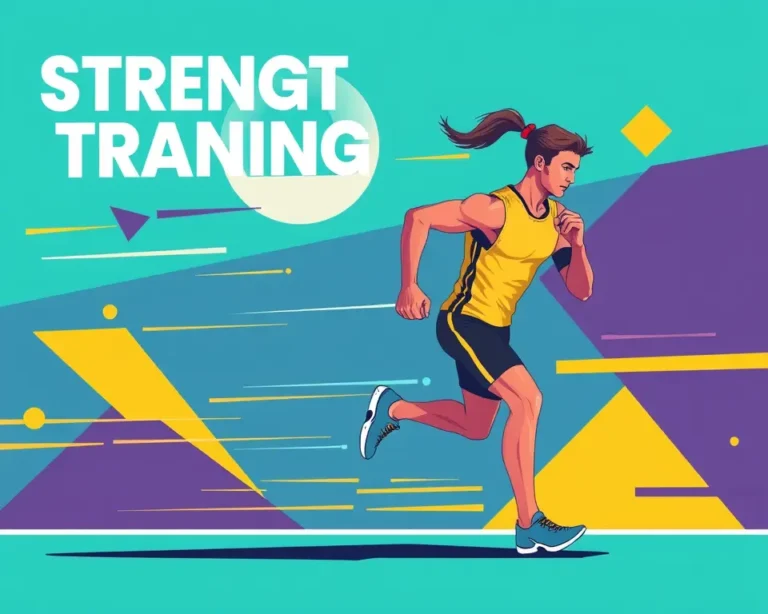Runners, it’s time to level up! We all know logging miles is crucial, but strength training is the secret weapon for unlocking your full potential. A stronger body translates to a more efficient stride, reduced injury risk, and the ability to push harder and go further. This targeted 5-move routine, clocking in at just 25 minutes, will build the necessary strength in your glutes, quads, hamstrings, and calves to help you achieve peak performance. These moves primarily focus on single-leg exercises, mimicking the mechanics of running and enhancing your balance and stability.
Why Strength Training is a Non-Negotiable for Runners
Running places significant demands on your body. Each foot strike generates a ground force equivalent to 2.5 to 2.8 times your body weight. Without adequate strength, your lower body struggles to absorb this impact, leading to potential injuries and decreased efficiency. Strength training shores up these weaknesses, offering a multitude of benefits:
- Injury Prevention: Strengthens supporting muscles and improves stability, reducing the risk of common running-related injuries like shin splints, runner’s knee, and stress fractures.
- Improved Running Economy: Enhances biomechanics and efficiency, allowing you to run faster and further with less effort.
- Increased Power and Speed: Builds explosive strength in key muscle groups, leading to a more powerful stride and increased speed.
- Enhanced Endurance: Improves muscle endurance, delaying fatigue and allowing you to maintain your pace for longer.
- Better Balance and Stability: Single-leg exercises improve unilateral balance, crucial for navigating uneven terrain and maintaining proper form.
The 5-Move Routine for a Stronger Run
This routine, designed by leading physical therapists and running coaches, targets the key muscle groups responsible for running performance. Perform each exercise for the prescribed number of repetitions (reps), resting for 30 seconds between exercises. Complete 3 sets of the entire circuit.
1. Single-Leg Deadlift
- Why it works: The single-leg deadlift is a powerhouse exercise that strengthens the hamstrings and glutes, crucial for maintaining proper running form. It engages your posterior chain (muscles on the back of your body), improving hip extension for a powerful stride and push-off.
- How to do it:
- Stand on your right leg, with a slight bend in the knee.
- Hold a dumbbell (optional) in your left hand or extend both arms out to the sides for balance.
- Hinge at your hips, lowering the dumbbell towards the ground while simultaneously extending your left leg straight back behind you. Keep your back straight and core engaged.
- Lower until your body is parallel to the ground or as far as your flexibility allows.
- Engage your glutes and hamstrings to return to the starting position.
- Repeat for 8-12 reps on each leg.
- Progression:
- Next level: Don’t let your non-supporting leg touch the ground between reps.
2. Single-Leg Hip Thrust
- Why it works: This exercise isolates the glutes, building strength for a powerful stride. It also improves hip extension and stability, essential for efficient running.
- How to do it:
- Position your upper back against a bench or stable surface, with your feet flat on the floor.
- Extend one leg straight out in front of you.
- Lower your hips towards the ground, keeping your core engaged.
- Drive through your heel of the grounded foot to lift your hips back up to the starting position, squeezing your glutes at the top.
- Repeat for 8-12 reps on each leg.
- Progression:
- Weighted: Place a dumbbell or barbell across your hips for added resistance.
3. Split Squat
- Why it works: This exercise challenges your balance and strengthens your quads, glutes, and hamstrings. The split stance mimics the single-leg nature of running, improving stability and power.
- How to do it:
- Stand with one foot forward and the other foot back, as if you were about to lunge.
- Elevate your rear foot on a step, chair, or bench.
- Lower yourself down by bending both knees until your front thigh is parallel to the ground and your back knee is close to the ground.
- Keep your core engaged and your front knee aligned over your ankle.
- Push through your front heel to return to the starting position.
- Repeat for 10-15 reps on each leg.
- Progression:
- Weighted: Hold dumbbells in each hand or wear a weighted vest.
- Tempo: Slow down the eccentric (lowering) phase of the movement.
4. Step Ups
- Why it works: This exercise strengthens the quads, glutes, and calves while improving balance and coordination. Stepping up onto a platform mimics the uphill running motion.
- How to do it:
- Stand in front of a step or box. The height of the step should be challenging but allow you to maintain good form.
- Place your right foot firmly on the step.
- Drive through your right heel to lift your body up onto the step, bringing your left knee up towards your chest.
- Slowly lower your left foot back to the ground, controlling the movement.
- Repeat for 10-15 reps on each leg.
- Progression:
- Higher Step: Use a higher step or box to increase the challenge.
- Weighted: Hold dumbbells in each hand.
5. Calf Raises
- Why it works: Strong calves are essential for powerful push-off and efficient running. Calf raises improve ankle stability and reduce the risk of Achilles tendon injuries.
- How to do it:
- Stand on a flat surface with your feet hip-width apart.
- Optionally, hold dumbbells in each hand for added resistance.
- Rise up onto your toes, squeezing your calf muscles at the top.
- Slowly lower back down to the starting position.
- Repeat for 15-20 reps.
- Progression:
- Single-Leg: Perform the exercise on one leg at a time to increase the challenge to your balance and calf strength.
- Elevated: Stand on a slightly elevated surface, such as a step or block, to increase the range of motion.
Important Considerations
- Warm-up: Before starting the routine, perform a 5-10 minute warm-up consisting of light cardio and dynamic stretching, such as leg swings, arm circles, and torso twists.
- Cool-down: After completing the routine, cool down with 5-10 minutes of static stretching, holding each stretch for 30 seconds. Focus on stretching your quads, hamstrings, glutes, and calves.
- Proper Form: Maintain proper form throughout each exercise to prevent injuries. If you are unsure about proper form, consult a physical therapist or certified personal trainer.
- Listen to Your Body: If you experience any pain, stop the exercise immediately.
- Consistency is Key: Aim to perform this routine 2-3 times per week for optimal results.
Beyond the Routine
While this 5-move routine is a great starting point, consider incorporating other strength training exercises into your program to target different muscle groups and further enhance your running performance. Some excellent additions include:
- Plank: Strengthens your core, improving stability and posture.
- Glute Bridges: Isolates the glutes, improving hip extension and power.
- Lunges: Strengthens the quads, glutes, and hamstrings, improving balance and coordination.
- Romanian Deadlifts: Strengthens the hamstrings and glutes, improving hip extension and power.
- Squats: A compound exercise that strengthens the quads, glutes, hamstrings, and core.
By consistently incorporating strength training into your running routine, you’ll not only become a stronger and more efficient runner but also significantly reduce your risk of injury. So, lace up those shoes, hit the ground running, and get ready to experience the transformative power of strength!







